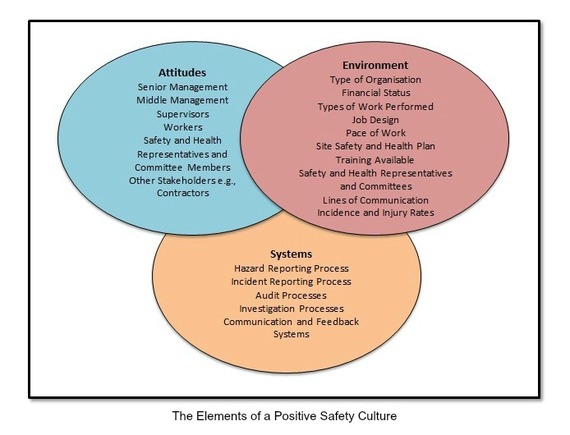The Chernobyl disaster in 1986 prompted the development of a new trend in the realm of occupational health and safety; safety culture. This unfortunate disaster which occurred on April 26, claimed the lives of many and has also resulted in long-term effects such as cancers and deformities among the population. Consequently, the Chernobyl disaster highlighted the importance of safety culture, as well as the impact of managerial and human factors on the outcome of safety performance.
So, what is safety culture really? While there is no single definition of 'safety culture,' in light of the Chernobyl disaster, safety culture was defined in the International Nuclear Safety Group's 1988 'Summary Report on the Post-Accident Review Meeting on the Chernobyl Accident' as,
"An organisational atmosphere where safety and health is understood to be, and is accepted as, the number one priority."
Therefore, safety culture refers to the ways in which safety is managed in the workplace. However, it is important to note that the concept of safety culture is not the same as environmental safety or occupational health and safety. In contrast, according to the Centers for Disease Control and Prevention, a safety culture permeates all aspects of the work environment and is reflected in a level of awareness and accountability for safety on the part of every individual in an organisation. Therefore, to fully understand what constitutes health and safety culture, the concept of 'culture' must first be examined.
Culture is described as a combination of an organisation's attitudes, behaviours, beliefs, values, and ways of doing things, as well as other shared characteristics. Furthermore, culture refers to the factors that influence the overall attitudes and behaviours within organisations, for instance, leadership and management style, institution mission and goals, and organisation of work processes. Culture provides the background against which day-to-day tasks are performed, and has been shown to be strongly associated with worker perceptions of job characteristics and organisational functioning. Thus, culture can facilitate the socialising of newcomers, define influence, and determine values. Therefore, a safety culture reflects the shared commitment of management and employees toward ensuring the safety of the work environment.
The basic elements of safety culture can then be summarised as follows:
- All individuals within the organisation believe they have a right to a safe and healthy workplace
- Each person accepts personal responsibility for ensuring his or her own safety and health
- Everyone believes he or she has a duty to protect the safety and health of others
Attitudes, both personal and organisational, affect the development of a safety culture in a workplace. The environment in which people work and the systems and processes within an organisation also influence the safety culture. Therefore, when establishing a safety culture, each organisation needs to consider all of these aspects in developing and nurturing a safety culture that suits the organisation and the individuals within it.
A Positive Safety Culture
- Positive workplace attitudes - from the president to the newest hire
- Involvement and buy-in of all members of the workforce
- Mutual, meaningful, and measurable safety and health improvement goals
- Policies and procedures that serve as reference tools, rather than obscure rules
- Personnel training at all levels within the organisation
- Responsibility and accountability throughout the organisation
When these criteria are consistently and effectively aimed at accident reduction, a positive workplace safety and health culture is created.

